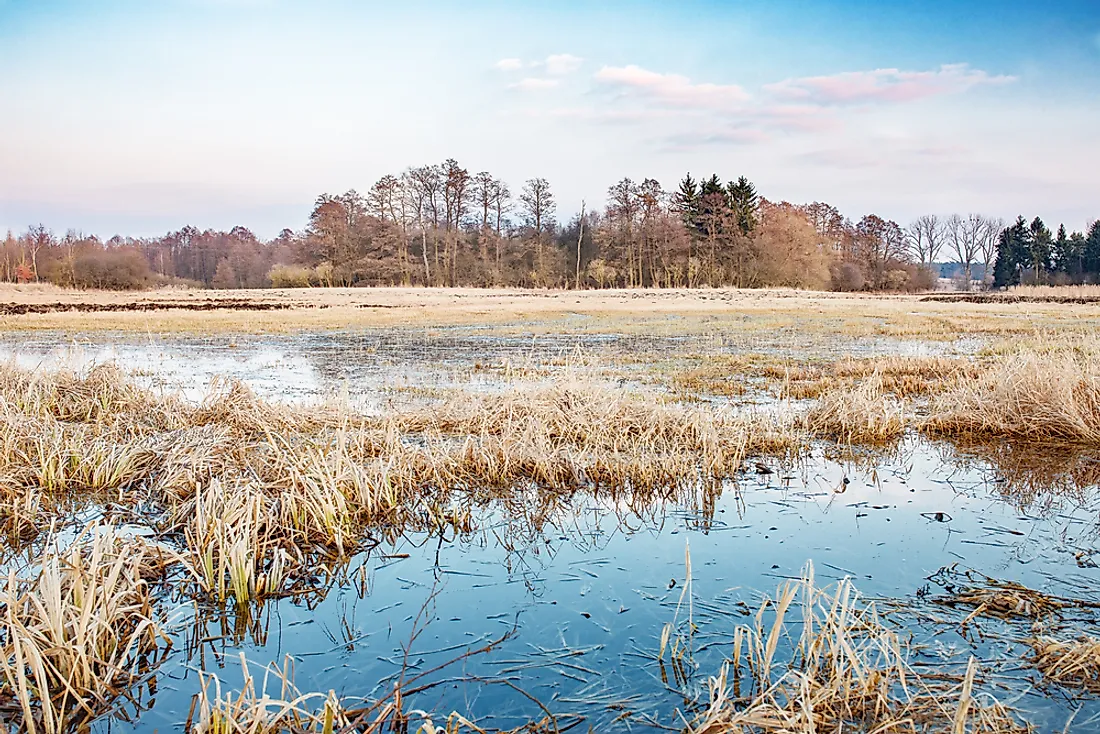What Is A Wet Meadow?

- Wet meadows are home to a high diversity of plants but few fish and amphibians.
- During the times of increased rainfall they collect runoff water which in turn prevents or reduces the possibility of floods.
- Wet meadows help regulate the amount of water flowing into forest creeks—preventing drought in the summer.
Wet meadows are very vital habitats due to the roles they play and the benefits they provide to us as human beings. They are one of the most diverse habitats when it comes to tree species. Additionally, they draw a lot of birds and insects towards them. Failure to conserve these habitats will harm such species. These habitats also control the measure of water streaming into forests which in turn prevents flooding and drought in the spring and summer respectively.
What Is a Wet Meadow?
A wet meadow is defined as an area whose soils are inundated with water either permanently or temporarily during the growing season. Wet meadows are classified under wetlands and are said to act as the “sponge” for the surrounding areas. They can be formed due to poor drainage or a high water table in soils which are usually clay and organic materials. They can also be caused from high amounts of rain water. Wet meadows mostly occur in areas with poor drainage which include shallow lake basins, lowlands, and areas which are between upland places and shallow marshes while some are found in the mountains. Examples of such habitats include ditches on the roadside, retention basins, floodplains, and pond areas.
Wet meadows are different from other types of wetlands such as marshes and swamps because they do not possess standing water except during the growing season usually for only a brief or moderate time. They have short periods where they are flooded with water, and afterwards, the soil remains saturated with water for a long time due to the high water table. The wide variety of plant species that survive in wet meadows are usually buried seeds during the dry season that sprout and flourish after flooding. A debate exists as to whether wet meadows are in the family of marshes or should it be classified as an utterly different wetland.
Wet Meadow Vegetation
Vegetation in wet meadows is usually herbaceous like reed canary grass, rushes, wool grass, green bulrush tussock sedge, soft rush and wildflowers among others that prosper in wetlands due to the extra fertile land. Shrubs like steeplebush, speckled alder, and broad-leaved meadowsweet can also be found in these areas.
Wet Meadows
During the times of increased rainfall, these habitats collect runoff water which in turn prevents or reduces the possibility of floods in the lowlands. Besides, wet meadows act as natural filters by clearing the extra minerals in the water they collect thereby providing safe, clean water. Due to the high amounts of nutrients they have, these areas also offer home and food to many birds, insects, reptiles, and amphibians.
Wet Meadow Threats
Despite their importance, wet meadows have significantly been decimated. Since they are mostly associated with agriculture, in some places, they have been drained to allow for agricultural activities. This destruction has made these habitats lose their biodiversity substantially. Dam construction has also in some cases interfered with the natural levels of water that are required to recreate wet meadows. In California, mountain meadows are the most threatened due to the exclusion of fire.
Recently, however, people have realized the importance of these habitats and have as expected started plans aimed at decreasing loss of wet meadows.











